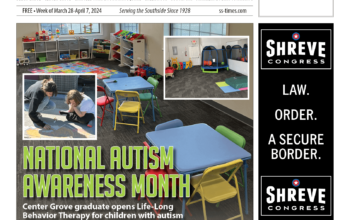By Curtis Honeycutt
Did you know that The Beatles’ album “Let It Be” is technically a soundtrack? It accompanies the 1970 documentary of the same title. If the film came back to theaters, I would probably go see it by myself.
You see, I don’t attend many movies with groups anymore. Part of that is a life stage issue — most of my friends are married and have small kids. It’s hard to justify the added babysitting expense if we want to go out for the evening. Before that, I was always the guy who arrived early. Because of my promptness, I ended up saving seats for the whole group. I’d start declaring my group’s territory by draping my jacket over a pair of seats. Then I’d put my popcorn and drink in the cupholders a few seats away.
As the minutes ticked on, I’d have to fend off more people who also wanted middle-middle of the theater. The anxiety of saving six to eight seats for my friends who were chronically five minutes late ended up being too much for me; I did not like this setup one bit.
That brings me to the crux of some more important grammar guidance: what’s the difference between setup and set up?
Let’s start with setup. Use setup (or set-up) as either a noun or an adjective. As a noun, setup means the arrangement or organization of something. For example: The camera setup was all wrong, so the director kept adjusting the shot.
As an adjective, setup often gets used in technology situations: Go to the setup screen to change your network settings.
As a verb, use set up: I set up my friend Byron with his new job answering phones at the conspiracy theory hotline.
We set up our BattleBot so it would never attack humans.
Think about it this way: the verb version of the word spreads out. It is in motion; it stretches and moves. The noun version (setup or set-up) is compact. It’s a box — a static thing.
Interestingly, you can apply this same model (noun and adjective vs. verbs) to other sets of words. Some include workout and work out, makeup and make up, dropout and drop out, and checkout and check out. When used as a noun or an adjective, these words are either one word or one word with a hyphen; when used as a verb, these words are two words.
Now that movie theaters have a different setup (with seats you reserve ahead of time), I don’t have to be so upset all the time. After all, the most important part of the movie is during the last five minutes, when they set up the perfect conditions for yet another sequel.
—Curtis Honeycutt is a wildly popular syndicated humor columnist. He is the author of Good Grammar is the Life of the Party: Tips for a Wildly Successful Life. Find more at curtishoneycutt.com.

